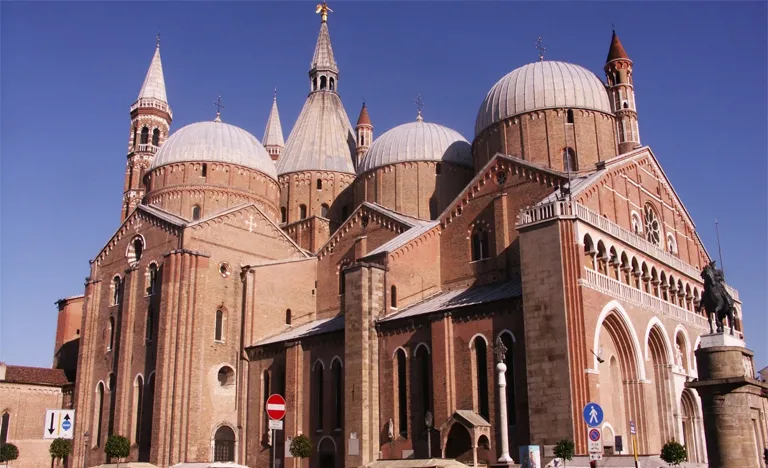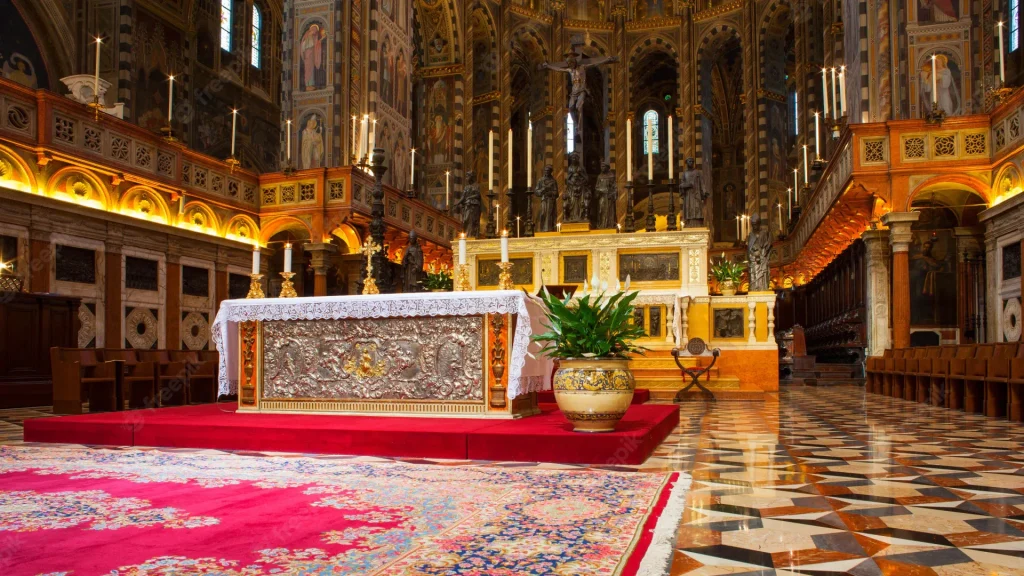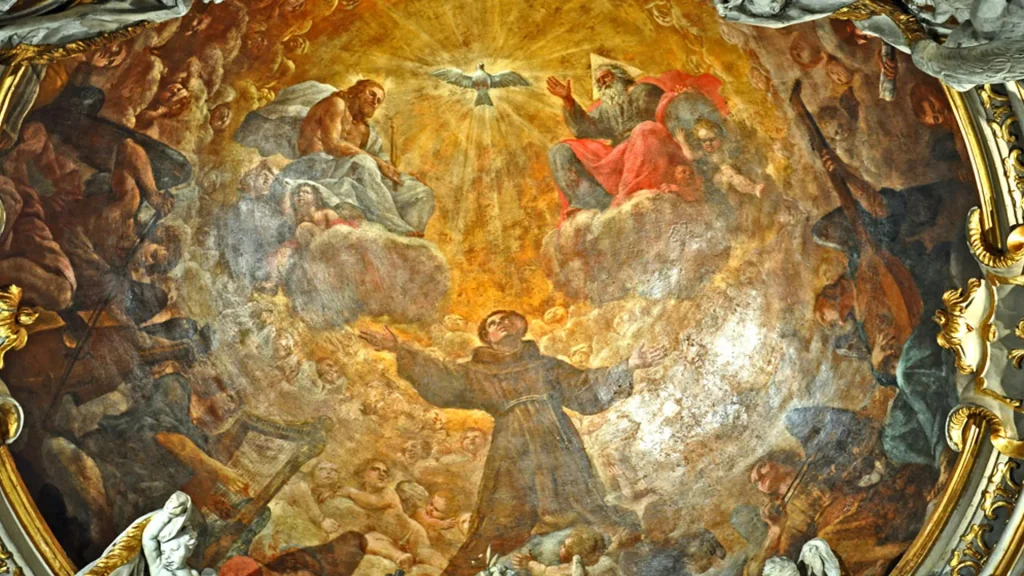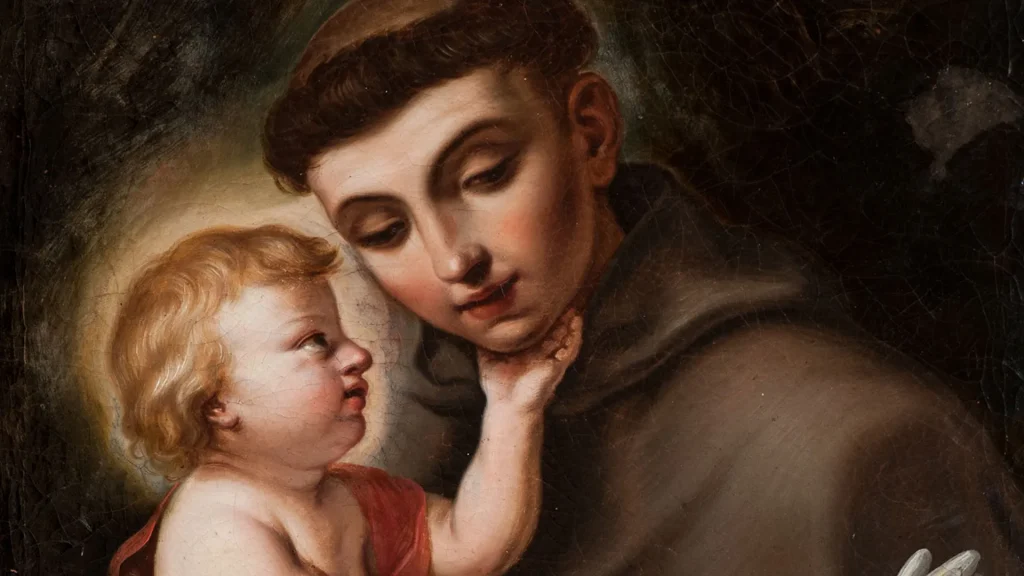
Introduction
The Pontifical Basilica of Saint Anthony of Padua (Basilica Pontificia di Sant’Antonio di Padova) is a Roman Catholic church and minor basilica in Padua, Veneto, Northern Italy, dedicated to St. Anthony. Although the Basilica is visited as a place of pilgrimage by people from all over the world, it is not the titular cathedral of the city, a title belonging to the Cathedral-Basilica of St. Mary of Padua. The basilica is known locally as “il Santo”. It is one of the eight international shrines recognized by the Holy See.
The Basilica of Saint Anthony and Padua is one of the largest churches in the world, visited every year by more than 5 million pilgrims. The relics of Saint Anthony are here preserved.
The Pontifical Basilica of Saint Anthony, which the people of Padua call Il Santo (The Saint), is the most important monument in the city and one of the world’s most important art treasures. Recognised by the Holy See as an International Shrine, it is also one of Christendom’s most celebrated and popular churches. The name of the architect is not known; he may have been a Franciscan friar, a man of genius and of extensive figurative knowledge. The Basilica was initiated in 1232, and its principal part was completed towards the end of that century. It was dedicated to Saint Anthony of Padua, who was born around 1195 in Lisbon, Portugal, and who died in Padua on June 13, 1231.
Taken as a whole, the majestic building displays the strong influence of Saint Mark’s Basilica in Venice, yet its large and imposing structure is Romanesque, while the interior, with its high apse and nine radial chapels, is purely Gothic in style. These contrasting characteristics are blended together in an original way which immediately distinguishes the Basilica from other medieval places of worship.
History of Basilica of Saint Anthony of Padua

Construction of the Basilica probably began around 1232, just one year after the death of St. Anthony. It was completed in 1310 although several structural modifications (including the falling of the ambulatory and the construction of a new choir screen) took place between the end of the 14th and the mid-15th century.
The Saint, according to his will, had been buried in the small church of Santa Maria Mater Domini, probably dating from the late 12th century and near which a convent was founded by him in 1229. This church was incorporated into the present basilica as the Cappella della Madonna Mora (Chapel of the Dark Madonna).
The Basilica of Saint Anthony of Padua - Biography
St. Anthony, whose baptismal name was Ferdinand, was born in Lisbon in 1195, the eldest son of an influential family. His parents had great plans for him, and so they arranged for a sound education. They were thinking of an ecclesiastical or bureaucratic career, but Ferdinand disappointed them by choosing a life more directly dedicated to the service of the Lord.
When he was fifteen, after much prayer and reflection, he left his rich home and went to live in the Augustinian Abbey of St. Vincent on the outskirts of Lisbon. The Canons Regular of St. Augustine, the religious order which he joined, has always been famous for their dedication to scholarly pursuits. It is to the Augustinians that the Saint is indebted for his intellectual formation, which made him one of the most learned clerics in Europe at the beginning of the thirteenth century.
After his ordination, Ferdinand was placed in charge of hospitality in his abbey. It was in this responsibility that he first came into contact with the Franciscans. In 1219 he met five followers of St. Francis who were on their way to Morocco to preach to the Muslims. He was strongly attracted by their simple Gospel lifestyle.
Then in February 1220, news arrived that his five Franciscan friends had been martyred in Morocco. Their remains had been gathered together and sent to Portugal, where they were being venerated as relics of martyrs of the faith. The king ordered them to be placed in the Church of the Holy Cross in Coimbra.
Ferdinand eventually obtained permission from his superiors to join the Franciscans. He was invested with the Franciscan habit and began to learn the teachings of their holy founder St. Francis. With this new lifestyle, he also took on a new name. He called himself Anthony, after the hermit St. Anthony of the desert to whom the Franciscan hermitage was dedicated.
Anthony had traveled from Coimbra in Portugal to the shores of Morocco, then to Sicily, then to Assisi, and finally to a small hermitage in Montepaolo. Anthony traveled throughout Northern Italy and Southern France, preaching especially in the areas that had been plagued by heresy. He combated both waves of abuse in the Church (e.g. political intrigues, moral decadence which had caused many to lose their faith, as well as the heretical positions (e.g. rejection of creation as evil, rejection of Church authority and the sacraments) which confused the faithful. His most powerful weapon against these enemies was his Gospel lifestyle, for by living what he preached he was able to confound heretics and edify Catholics.
Anthony was assigned the post of Minister Provincial (or guide of Franciscan fraternities) in northern Italy, probably during the years 1227-1230. The task involved visiting several monasteries in northern Italy. Anthony, however, had a preference for the city of Padua and the small Franciscan community at the simple church of Santa Maria Mater Domini (later extended and transformed into the current Basilica of St. Anthony).
In Padua, Anthony concluded a couple of relatively short stays: the first, between 1229 and 1230; the second, between 1230 and 1231, during which he died prematurely. Although the time he spent in Padua was short, Anthony established a very strong bond with this city.
Architecture

Sant’Antonio is a giant edifice without a precise architectural style. Over the centuries, it has grown under a variety of different influences as shown by the exterior details.
The new basilica was begun as a single-naved church, like that of St Francis of Assisi, with an apsidal chancel, broad transepts and two square nave bays roofed with hemispherical domes like that of San Marco, Venice. The exterior style is a mixing of mainly Romanesque and Byzantine elements, with some Gothic features.
Later in the 13th century, the aisles were added in a more Gothic style, the length of each nave bay being divided into two aisle bays with pointed arches and quadripartite vaults.
The eastern apse was also extended in the Gothic style, receiving a ribbed vault and nine radiating chapels in the French manner. Later also, the Treasury chapel was built in 1691 in the Baroque style by Filippo Parodi, a pupil of Bernini.
Externally, the brick facade has a Romanesque central section which was extended outwards when the aisles were built, acquiring in the process four deep Gothic recesses and an elegant arcaded balcony which stretches across the broad front of the building. The facade gable shows little differentiation between the nave and aisle, screening the very large buttresses that have the same profile and form a richly sculptural feature when the building is viewed from the side.
The domes, like the domes of St. Mark’s Basilica, were raised in height externally, giving a Byzantine appearance to the building, while the multitude of small belfries which accompany the domes recall Turkish minarets. Externally, at the main roof line each section of the building is marked by a low gable decorated with blind arcading in brick.
These gables combine with the domes, the broad buttresses and the little towers to create a massive sculptural form, both diverse and unified in its conglomeration of features. As a work of architecture the building is particularly effective when viewed from the north west, an extra dimension being added to the facade by the huge plinth and dynamic equestrian monument of the Condottiero Gattamelata by Donatello.
Art Works and Treasures

The interior of the church contains numerous funerary monuments, some of noteworthy artistic value. The Chapel of the Blessed Sacrament (Cappella del Santissimo Sacramento, also known as Cappella Gattamelata), in the right aisle, houses the tomb of the famous condottiero Gattamelata and of his son Giannantonio. The bronze tabernacle is made by Girolamo Campagna. This chapel, with its broad bands of polychrome and carved Gothic details, has had many stages of decoration, the final stage being the creation of an mosaic in the tall rear niche representing the Holy Spirit with rays of golden light descending against a background of intensely blue sky. This work was created by Lodovico Pogliaghi between 1927 and 1936.
Relics of St Anthony are to be found in the ornate Baroque Treasury Chapel (begun in 1691). The body of the saint, which was in the Madonna Mora Chapel, has, from 1350, lain in a separate transept chapel, the Chapel of St Anthony, the interior decoration being attributed to Tullio Lombardo, who also provided the sixth and seventh reliefs depicting the miracles of St Anthony (Miracle of the stingy man’s heart, Miracle of the repentant man). The third relief Saint bringing back to life a man who had been murdered is a masterpiece by Girolamo Campagna. The late-16th century statues are by Tiziano Aspetti.
The Basilica contains several important images of the Madonna. The Madonna Mora is a statue of the Madonna with the Christ Child by the French sculptor Rainaldino di Puy-l’Evéque, dating from 1396. Her name refers to her black hair and olive skin tone, being interpreted as “swarthy”.
The Madonna del Pilastro is a mid-14th-century fresco by Stefano da Ferrara, located on the pier adjacent the left aisle.
Among other sculptural work is the Easter candelabrum in the apse, finished in 1515 by Andrea Briosco and considered his masterwork. The high altar area features the bronze Madonna with Child and six statues of Saints by Donatello, who also executed four reliefs with episodes of life of St. Anthony.
To the right hand side of the nave, opposite the tomb of the Saint is the large Chapel of St. James, commissioned by Bonifacio Lupi in the 1370s in Gothic style, with frescoed walls depicting the Stories of St. James and the Crucifixion by Altichiero da Zevio. Altichiero’s Crucifixion is one of the most significant paintings of the late 14th century. There are several frescoes created by Girolamo Tessari.
The Chin and Tongue of St. Anthony are displayed in a Gold Reliquary at the Basilica of Saint Anthony of Padua.
St. Anthony Prayer for Lost Things & Intercession
Anthony is famous throughout the world as the saint who helps to find lost objects: everyday items, important documents, even the faith itself. The prayer that follows invokes the aid of Saint Anthony in search of what has been lost.
Glorious Saint Anthony, you have exercised the divine power to find what was lost. Help me to recover the grace of God, and make me zealous in the service of God and in the practice of living the virtues. Let me find what I have lost, thus showing me the presence of your goodness.
Anthony, a glorious servant of God, famous for your merits and powerful miracles, help us to find what was lost. Give us your help in times of temptation, and enlighten our minds in searching the will of God. Help us to find again the life of grace, which our sin destroyed, and lead us to the possession of the glory promised us by the Savior. We ask this through Christ our Lord. Amen.
About St. Anthony of Padua

- Saints Nаmе : St Anthony of Padua
- Віrth nаmе : Fernando Martins de Bulhões
- Gender – Male
- Віrth Dаtе : 15 August 1195
- Birth Place : Lisbon, Portugal
- Died : 13 June 1231
- Feast day : 13 June
Shrine and Tomb – The Basilica of St. Anthony, Padua, Italy
Patron of: Lisbon, Portugal, lost items, lost people, lost souls, American Indians, Brazil, elderly people, faith in the Blessed Sacrament, fishermen, harvests, horses, oppressed people, poor people, pregnant women, shipwrecks, starvation, sterility.
Canonization: Beatified 30 May 1232, canonized 30 May 1232, Spoleto, Italy by Pope Gregory IX.
The Chapel of the Tomb of St Anthony of Padua
The Saint’s tomb has been called the “Ark” from the very beginning. The Saint’s tomb is in the altar in this chapel, at head height. Originally it was located (from 1231 to 1263) in the little chapel of St. Maria Mater Domini (today the Chapel of the Black Madonna) and from 1263 to 1310 in the center of the Basilica, in the Presbytery, under the present conical cupola. The location of the tomb from 1310 to 1350 is uncertain, however, it might have been in its current position. It has remained in this chapel from 1350.
Feast Day – 13th June
Annual Feast Day of The Basilica of Saint Anthony of Padua, Veneto is celebrated on 13th June.
Every year on June 13th Procession of the Relics of the Saint and his statue is made through the streets of Padua with the participation of thousands of people.
Mass Time
Weekdays
Sundays
Church Visiting Time
Contact Info
Basilica of Saint Anthony of Padua,
Piazza del Santo, 11
35123 Padua – Italy
Phone No.
Tel : +39 049 8225652
Accommodations
How to Reach The Basilica
Venice Airport (VCE) also known as Venice Marco Polo Airport is the international airport of Venice, Italy. The distance between Venice Airport (VCE) and Basilica of Saint Anthony of Padua is 38 km. The road distance is 46.8 km.
Santo Tram Stop in Padua, Italy is the nearby Tram Station to the Basilica.







